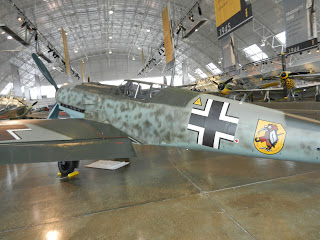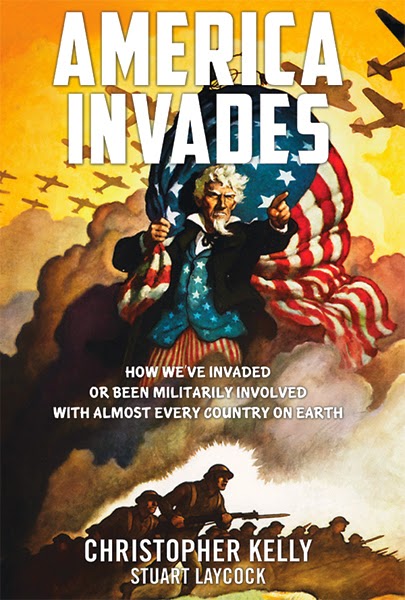 |
| Expats Who Made a Difference |
Tommy Hitchcock Jr. (
http://en.wikipedia.org/wiki/Thomas_Hitchcock,_Jr.) was probably the most famous American polo player of the 1930's. I am indebted to Lynne Olson for introducing me to this all-but-forgotten hero of World War II in her wonderful book,
Citizens of London, published in
2010 (
http:/www.amzn.com/0812979354).
 |
| Tommy Hitchcock 1900 - 1944 |
Olson writes that Hitchcock "was he kind of man other people wanted to be. Wealthy businessmen like Averell Harriman and Jock Whitney idolized him...Fitzgerald wrote that he was high 'in my pantheon of heroes.'" He inspired two of F. Scott Fitzgerald's fictional characters Tom Buchanan in
The Great Gatsby and Tommy Barban in
Tender is the Night.
Tommy Hitchcock was a product of a privileged upbringing. He attended St. Paul's and later Harvard. Before his sixth form year at St Paul's, however, he joined up to fly in World War I with the
Lafayette Escadrille. He was shot down, captured and sent to a German POW camp. During a train transfer between camps he managed to steal a map, jump off the train and hike almost 100 miles to neutral Switzerland. He was 18 years old at the time!
He was a highly accomplished polo player. Olson describes him as "a whirling dervish on the polo field, wielding his mallet with violent force and driving the ball astonishing distances." One fellow player said, "there was no player like him--ever."
Flying airplanes, however, was his greatest love. "Polo is exciting," he said, "but you can't compare it to flying in wartime. That's the best sport in the world."
"In the early 1930's Hitchcock became a partner in the investment banking firm Lehman Brothers and brokered a number of key deals, including the purchase of one of the country's leading shipping companies." He married a Mellon family heiress in 1928, with whom he had four children.
Having experienced the grisly reality of the First World War, he was an fervid isolationist who hoped that America could avoid the devastation of a Second World War. Pearl Harbor, of course, changed everything. Tommy volunteered his services to General Hap Arnold, chief of staff of the U.S. Army Air Force. The Army Air Corps turned him down. He then approached Gil Winant, the American ambassador to the court of St. James (who succeeded and was an enormous improvement over the dreadful Joseph Kennedy, see earlier post,
Daffodils, Joseph Kennedy and Americans Behaving Badly, 3/19/12) who hired him to act as an assistant U.S. military attache to the RAF. His brief was to act as a liason between U.S. 8th Army air force and the RAF's Fighter Command.
Until the invasion at Normandy in June 1944 the principal Allied response to Hitler was the Allied Bomber campaign. The KIA rate for Allied heavy bomber crews was an staggering 71%. "The U.S. air operations in Europe alone would suffer more fatalities--26,000--than the entire Marine Corps in its protracted bloody campaign in the Pacific." The biggest problem that the vulnerable bombers faced was a lack of long range escorts to accompany them over targets in the heart of Germany.
 |
| P-51D (FHC in Everett, WA) |
North American Aviation Co. in California was developing a promising new fighter, the P-51 Mustang, for the RAF. Hitchcock visited the RAF development facility at Duxford (see earlier post,
Duxford and...George Carlin, 4/30/12) to observe the performance tests of the new plane. "The Mustang was faster than the Spitfire, had a longer range, and, at medium and low altitudes, was nimbler at diving. It was, said one observer, "the cleanest and sweetest thing in the air.'" The RAF test pilots observed that its performance could be enhanced even more if its underpowered American engine (the General Motors Allison V-1710 which tended to stall over 15,000 feet) was replaced by the high-performance Merlin engine manufactured by Rolls-Royce.
Such thinking was anathema to Hap Arnold and the 8th U.S. army Air Corps brass. Tex McRary, a Groton and Yale alumnus, who worked in the Eighth's PR office wrote, "Somehow, if a thing was British, two strikes were already chalked up against it in America. Tommy reversed the formula. If an idea had been tested and okayed in Britain's battle lab, then Hitchcock called it right. He knew that the toughest air fighting in the world was over here. Anything that survived had to be good."
In spite of concerted opposition from the 8th US Air Army brass, Hitchcock became a strong advocate for introducing the British engines into the American fighter. Hitchcock turned for support to Robert Lovett (see earlier post,
The Millionaire's Unit, 6/18/12) who was the U.S. undersecretary of war at the time. Both men had flown in World War I. Hitchcock became the ramrod on the project making repeated trips to California to the plants where the Mustangs were manufactured to ensure that the planes were off the production lines as quickly as possible. The first large shipment of P-51's arrived in Britain in January 1944 in time for the D-day invasion.
These iconic planes were critical to the success of the Allied bomber campaign and saved the lives of many aircrews. They were later used by the famous Tuskegee airmen (see earlier post,
Red Tails versus Obama, 6/20/12) and even succeeded in shooting down several of the German ME-262 jet fighters.
After the war when Luftwaffe chief Hermann Goring was interrogated about when he realized that Germany would lose the war he replied, "The first time your bombers came over Hanover escorted by fighters, I began to be worried. When they came with fighter escorts over Berlin, I knew the jig was up."
 |
| Commander Kelly with P-51 D (FHC in Everett, WA) |
In the early months of 1944, however, there was growing concern about the Mustang. Several planes had crashed for no apparent reason. Hitchcock, as head of research and development, felt a keen responsibility for finding out what was wrong. Rather than delegating the job to a test pilot he insisted on finding out for himself. On an April morning in 1944 he climbed into a test Mustang and took it up to 15,000 feet. Olson writes, "suddenly without warning, it hurtled down, faster and faster, until it smashed into the ground, sending a plume of oily black smoke into the sky. Hitchcock's body was found nearby."
Ambassador Winant wrote that the Mustang, "is tangible evidence of Tommy's contribution to victory. without it we would not be winning the air war over Germany today." Tommy Hitchcock was "a chase pilot --first, last and always."
Special Thanks to Paul Allen's Flying Heritage Collection in Everett,WA (
http://www.flyingheritage.com/TemplateHome.aspx?contentId=1). Commander Kelly says, "Be sure to visit if you are in the Northwest and have any interest in World War II."



































